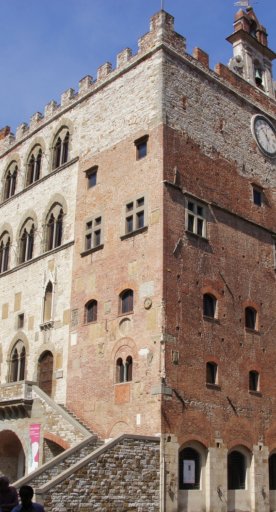Archaeological Area in Gonfienti
A highly important Etruscan discovery in Prato
The archaeological site in Gonfienti, found in the outskirts of Prato, is important because it confirms Etruscan activity in the area. This vital discovery undermines other theories, such as the belief that Florence, having been a Roman colony, is the older city, and that Prato's surroundings were uninhabitable marshland in the 6th-4th centuries BCE.
A large building has been found here, composed of different rooms facing inwards onto a central courtyard. An entrance can be identified in the middle of the side overlooking the street; on the sides there are two elongated spaces; and the living quarters revolve around the courtyard, from the clay floor upwards. The courtyard, covered in its north-west corner, has a circular well, decorated with pebbles arranged in concentric rings. The roof of the building was made from roof shingle and curved tiles, with details of a woman's head, framed by a seashell.
Apart from the foundations of the house, as well as some bronzes and vases, some spools were also found, which were probably used by the women for sewing. The city, which stood in the vast plain at the foot of the Calvana mountains, is unlike other archaeological sites in that it does not demonstrate a casual urban layout but a precise design, which we can see in the parallel streets and their intersecting lanes.
The evidence uncovered so far, with both Greek pottery and ceramics intended for more domestic use, suggests that the inhabitants existed at a high social and economic level.










